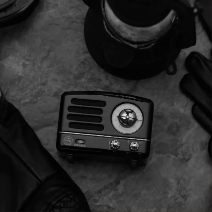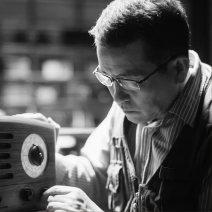Wireless speakers are a great way to enjoy your favorite music, podcasts, or movies without the hassle of wires and cables. They can also enhance the sound quality and performance of your home stereo system, creating a more immersive and enjoyable listening experience.
However, connecting wireless speakers to a stereo receiver can be tricky, especially if you are not familiar with the different options and technologies available. In this article, we will provide a simple guide on how to connect wireless speakers to a stereo receiver using four common options: Bluetooth, Wi-Fi, NFC, and RF.
Bluetooth
Bluetooth is a convenient, widely used wireless technology. This method is compatible with most devices and is relatively simple to set up. However, it's worth noting that Bluetooth may be affected by limited range, interference, and a potential drop in audio quality.
To use Bluetooth:
- Make sure your stereo receiver and wireless speakers have Bluetooth functionality. If not, you'll need to acquire Bluetooth adapters.
- Turn on your stereo receiver and select Bluetooth input mode.
- Activate Bluetooth pairing mode on your wireless speakers.
- On your Bluetooth-enabled device (smartphone, tablet, etc.), scan for available devices and select your stereo receiver. Confirm any pairing requests.
Wi-Fi
Wi-Fi is a more advanced wireless technology. It offers longer range, higher bandwidth, and better audio quality compared to Bluetooth. However, it generally requires more setup and compatible devices.
To use Wi-Fi:
- Connect your stereo receiver and wireless speakers to your Wi-Fi router.
- Install an app or software on your streaming device that allows control of your speakers and receiver via Wi-Fi. Examples include Sonos, AirPlay, Chromecast, and Spotify Connect.
- Launch the app and follow the instructions for setup. You may need to scan for devices, name your devices, adjust settings, and more.
NFC
Near Field Communication (NFC) is a wireless technology that allows devices to communicate when in proximity to each other. It's faster and simpler than Bluetooth, but has a shorter range and limited compatibility.
To use NFC:
- Ensure your stereo receiver and wireless speakers have NFC functionality. If not, NFC tags can be used instead.
- Turn on your stereo receiver and select NFC input mode.
- Activate the NFC function on your wireless speakers.
- On your NFC-enabled device, enable the NFC function and bring your device close to the NFC tag on your stereo receiver. Confirm any connection requests.
RF
Radio Frequency (RF) is a wireless technology that uses radio waves to transmit data. It's among the oldest and simplest ways to connect wireless speakers to a stereo receiver. However, RF can be affected by interference, noise, and distortion.
To use RF:
- Make sure your stereo receiver and wireless speakers have RF functionality. If not, you'll need an RF transmitter for the receiver and an RF receiver for the speakers.
- Turn on your stereo receiver and select the RF output mode.
- Select the RF input mode on your wireless speakers.
- Adjust the frequency on both your stereo receiver and wireless speakers until they match and you hear a clear sound.
Frequently asked questions(FAQ)
What is the easiest way to connect wireless speakers to a stereo receiver?
Bluetooth is the simplest way to connect wireless speakers to a stereo receiver. It is a wireless technology that allows devices to communicate with each other over short distances. To connect wireless speakers to a stereo receiver using Bluetooth, you will need the following:
- A stereo receiver with a Bluetooth function or a Bluetooth adapter that can plug into the receiver's audio input
- Wireless speakers with a Bluetooth function or a Bluetooth adapter that can plug into the speaker's audio input
- A device that can stream audio via Bluetooth, such as a smartphone, tablet, or laptop
Once you have all of the necessary equipment, follow these steps to connect your wireless speakers to your stereo receiver using Bluetooth:Turn on your stereo receiver and select the Bluetooth input mode.
- Turn on your wireless speakers and activate the Bluetooth pairing mode.
- Turn on your device that can stream audio via Bluetooth and enable the Bluetooth function.
- Scan for available devices and select your stereo receiver from the list.
- Confirm the pairing request if prompted.
Once your stereo receiver and wireless speakers are paired, you can start streaming audio from your device to your wireless speakers via Bluetooth.
What is wireless speaker technology?
Wireless speaker technology is a type of speaker that uses radio waves to transmit audio signals. This allows the speakers to be placed anywhere in a room without the need for wires. There are many different types of wireless speaker technologies, including Bluetooth, Wi-Fi, and RF.
What if a stereo receiver doesn't have a built-in Bluetooth function?
If your stereo receiver doesn't have a built-in Bluetooth function, you can still connect wireless speakers to it using a Bluetooth adapter. A Bluetooth adapter is a device that plugs into the stereo receiver's audio input and allows it to connect to Bluetooth devices.
To connect wireless speakers to a stereo receiver using a Bluetooth adapter, you will need the following:
- A stereo receiver with an audio input
- A Bluetooth adapter that plugs into the stereo receiver's audio input
- Wireless speakers with a Bluetooth function
Once you have all of the necessary equipment, follow these steps to connect your wireless speakers to your stereo receiver using a Bluetooth adapter:
- Turn on your stereo receiver and select the input mode that corresponds to the Bluetooth adapter.
- Turn on your wireless speakers and activate the Bluetooth pairing mode.
- Turn on your device that can stream audio via Bluetooth and enable the Bluetooth function.
- Scan for available devices and select your stereo receiver from the list.
- Confirm the pairing request if prompted.
Conclusion
In this article, we have provided a simple guide on how to connect wireless speakers to a stereo receiver using four common options: Bluetooth, Wi-Fi, NFC, and RF. Each option has its own advantages and disadvantages, depending on your needs and preferences. Here is a brief comparison and contrast of the different options:
|
Option |
Pros |
Cons |
|
Bluetooth |
Compatible with most devices; Easy to set up; Low power consumption |
Limited range; Interference; Audio quality degradation |
|
Wi-Fi |
Longer range; Higher bandwidth; Better audio quality; More features |
More setup and configuration; Compatible devices and software required; Wi-Fi router required |
|
NFC |
Faster and simpler than Bluetooth; No pairing or scanning required |
Very short range; Limited compatibility; Low security |
|
RF |
No setup or configuration required; Cheap and simple |
Interference; Noise; Distortion |
Which option is right for you?
If you're looking for a quick and easy way to connect wireless speakers to your stereo receiver without any hassle, Bluetooth or NFC might be suitable for you. However, if you want better sound quality and performance, or if you need to connect more than one pair of wireless speakers, Wi-Fi is the best option. If you're on a budget or you don't need the best possible sound quality, RF might be a good option for you.
Here are some additional things to consider when choosing a wireless connection option:
- Range: How far do you need your wireless speakers to be from your stereo receiver?
- Audio quality: How important is sound quality to you?
- Features: Do you need any special features, such as multi-room audio or streaming from different devices?
- Budget: How much money are you willing to spend?
There is no one-size-fits-all answer to the question of which wireless connection option is best. The best option for you will depend on your individual needs and preferences. Consider the factors above carefully when making your decision.
We hope this article has helped you understand how to connect wireless speakers to a stereo receiver using different options. Enjoy your wireless listening experience!





























